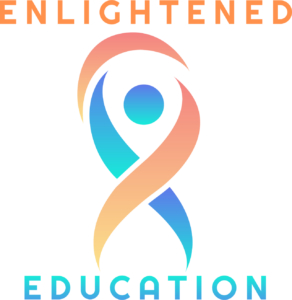In today’s ever-evolving educational landscape, the quest for effective curriculum and instruction strategies has never been more critical. Education is the cornerstone of personal and societal growth, and the quality of curriculum and instruction plays a pivotal role in shaping the learning experience for students of all ages. In this blog post, we’ll delve deep into the world of education, exploring what curriculum and instruction mean, why they matter, and how to navigate the challenges and opportunities they present.
II. Understanding Curriculum and Instruction
Curriculum: Curriculum refers to the structured content and learning materials used in an educational program. It encompasses what students are expected to learn, the objectives of their education, and the sequence of instruction.
Instruction: Instruction, on the other hand, pertains to the methods, techniques, and strategies employed by educators to facilitate learning. It involves the delivery of content, assessment of student progress, and adaptation of teaching approaches.
III. The Significance of Effective Strategies
Effective curriculum and instruction strategies are the linchpin of successful education. They can transform a mundane learning experience into a dynamic and engaging journey. Here’s why they matter:
- Improved Student Outcomes: Well-designed curriculum and effective instruction lead to better student outcomes, such as higher test scores, improved critical thinking skills, and increased retention of knowledge.
- Engagement and Motivation: Effective strategies captivate students’ attention and keep them motivated to learn. Engaged students are more likely to embrace learning as a lifelong pursuit.
IV. Types of Curriculum
There are various curriculum models, each with its own approach to organizing and delivering content:
- Traditional Curriculum: Emphasizes a structured, teacher-centered approach with a focus on core subjects.
- Progressive Curriculum: Promotes student-centered learning, exploration, and critical thinking.
- Thematic Curriculum: Organizes content around themes or real-world topics, fostering interdisciplinary learning.
Each curriculum type has its advantages and is suited to different educational settings.
V. Effective Instructional Approaches
Effective instruction is not one-size-fits-all. Educators can choose from a variety of instructional approaches, including:
- Experiential Learning: Learning by doing, where students actively engage in hands-on experiences.
- Flipped Classrooms: Inverting the traditional teaching model by having students learn new content at home and engage in activities during class.
- Project-Based Learning: Encouraging students to explore real-world problems through collaborative projects.
Each approach caters to different learning styles and goals, providing educators with a diverse toolkit.
VI. Incorporating Technology
In the digital age, technology has become an integral part of education. It enhances curriculum and instruction in several ways:
- Online Learning Platforms: Facilitating remote learning and access to a wealth of educational resources.
- Interactive Simulations: Providing students with immersive, visual learning experiences.
- Data Analysis: Assisting educators in tracking student progress and tailoring instruction.
VII. Adapting to Diverse Learners
Effective educators recognize that every student is unique. To cater to diverse learning styles and abilities, they employ strategies such as:
- Differentiated Instruction: Tailoring instruction to meet the individual needs of each student.
- Universal Design for Learning (UDL): Creating flexible learning environments that accommodate various learning preferences.
VIII. Assessing Curriculum and Instruction
Assessment is a crucial component of effective education. It helps educators evaluate the impact of their strategies. Methods include:
- Formative Assessment: Ongoing assessments during instruction to monitor student progress.
- Summative Assessment: Evaluations at the end of a unit or course to measure overall learning.
IX. Overcoming Challenges
Implementing effective curriculum and instruction strategies can be challenging. Common obstacles include limited resources, resistance to change, and standardized testing pressures. To overcome these challenges, educators can collaborate, seek professional development, and advocate for evidence-based practices.
X. Case Studies and Examples
Several educational institutions have successfully implemented effective strategies. For example, High Tech High, a network of charter schools, employs project-based learning to foster critical thinking and collaboration skills. Their students consistently achieve high academic success.
XI. Future Trends in Education
The educational landscape is continually evolving. Emerging trends include personalized learning, artificial intelligence-driven instruction, and increased emphasis on social-emotional learning. Keeping abreast of these developments is vital for educators and institutions.
Conclusion
In conclusion, effective curriculum and instruction strategies are the bedrock of quality education. By understanding different curriculum models, embracing diverse instructional approaches, and harnessing technology, educators can create dynamic learning experiences that prepare students for the challenges of the future. Navigating the educational landscape requires adaptability, innovation, and a commitment to lifelong learning. Let’s embark on this journey together, ensuring that the next generation receives the best possible education.

